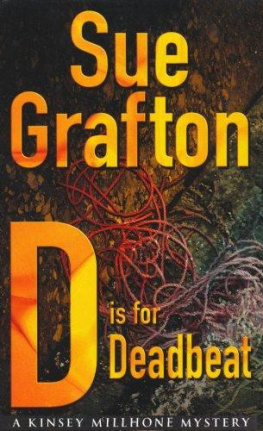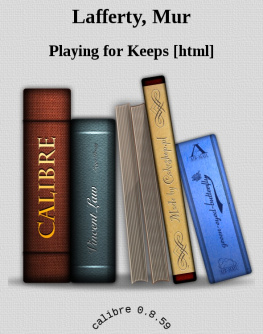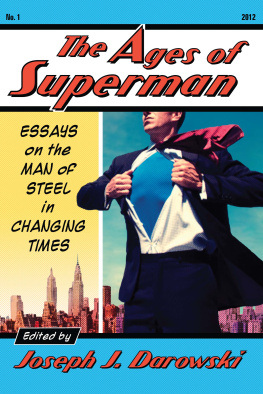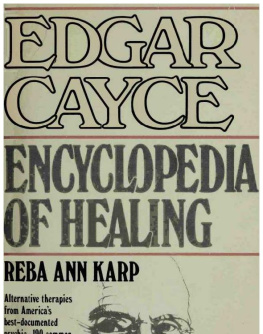
Sue Grafton
R is for Ricochet
Book 18 in the Kinsey Millhone series
The basic question is this: given human nature, are any of us really capable of change? The mistakes other people make are usually patently obvious. Our own are tougher to recognize. In most cases, our path through life reflects a fundamental truth about who we are now and who we've been since birth. We're optimists or pessimists, joyful or depressed, gullible or cynical, inclined to seek adventure or to avoid all risks. Therapy might strengthen our assets or offset our liabilities, but in the main we do what we do because we've always done it that way, even when the outcome is bad perhaps especially when the outcome is bad.
This is a story about romance love gone right, love gone wrong, and matters somewhere in between.
I left downtown Santa Teresa that day at 1:15 and headed for Montebello, a short ten miles south. The weather report had promised highs in the seventies. Morning cloudiness had given way to sunshine, a welcomed respite from the overcast that typically mars our June and July. I'd eaten lunch at my desk, feasting on an olive-and-pimiento-cheese sandwich on wheat bread, cut in quarters, my third-favorite sandwich in the whole wide world. So what was the problem? I had none. Life was great.
In committing the matter to paper, I can see now what should have been apparent from the first, but events seemed to unfold at such a routine pace that I was caught, metaphorically speaking, asleep at the wheel. I'm a private detective, female, age thirty-seven, working in the small Southern California town of Santa Teresa. My jobs are varied, not always lucrative, but sufficient to keep me housed and fed and ahead of my bills. I do employee background checks. I track down missing persons or locate heirs entitled to monies in the settlement of an estate. On occasion, I investigate claims involving arson, fraud, or wrongful death.
In my personal life, I've been married and divorced twice, and subsequent relationships have usually come to grief. The older I get, the less I seem to understand men, and because of that I tend to shy away from them. Granted, I have no sex life to speak of, but at least I'm not plagued by unwanted pregnancies or sexually transmitted diseases. I've learned the hard way that love and work are a questionable mix.
I was driving on a stretch of highway once known as the Montebello Parkway, built in 1927 as the result of a fund-raising campaign that made possible the creation of frontage roads and landscaped center dividers still in evidence today. Because billboards and commercial structures along the roadway were banned at the same time, that section of the 101 is still attractive, except when it's jammed with rush-" hour traffic.
Montebello itself underwent a similar transformation in 1948, when the Montebello Protective and Improvement Association successfully petitioned to eliminate sidewalks, concrete curbs, advertising signs, and anything else that might disrupt the rural atmosphere. Montebello is known for its two-hundred-some-odd luxury estates, many of them built by men who'd amassed their fortunes selling common household goods, salt and flour being two.
I was on my way to meet Nord Lafferty, an elderly gentleman, whose photograph appeared at intervals in the society column of the Santa Teresa Dispatch. This was usually occasioned by his making yet another sizable contribution to some charitable foundation. Two buildings at UCST had been named for him, as had a wing of Santa Teresa Hospital and a special collection of rare books he'd donated to the public library. He'd called me two days before and indicated he had "a modest undertaking" he wanted to discuss. I was curious how he'd come by my name and even more curious about the job itself. I've been a private investigator in Santa Teresa for the past ten years, but my office is small and, as a rule, I'm ignored by the wealthy, who seem to prefer doing business through their attorneys in New York, Chicago, or L.A.
I took the St. Isadore off-ramp and turned north toward the foothills that ran between Montebello and the Los Padres National Forest. At one time, this area boasted grand old resort hotels, citrus and avocado ranches, olive groves, a country store, and the Montebello train depot, which serviced the Southern Pacific Railroad. I'm forever reading up on local history, trying to imagine the region as it was 125 years ago. Land was selling then for seventy-five cents an acre. Montebello is still bucolic, but much of the charm has been bulldozed away. What's been erected instead the condominiums, housing developments, and the big flashy starter castles of the nouveau riche is poor compensation for what was lost or destroyed.
I turned right on West Glen and drove along the winding two-lane road as far as Bella Sera Place. Bella Sera is lined with olive and pepper trees, the narrow blacktop climbing gradually to a mesa that affords a sweeping view of the coast. The pungent scent of the ocean faded with my ascent, replaced by the smell of sage and the bay laurel trees. The hillsides were thick with yarrow, wild mustard, and California poppies. The afternoon sun had baked the boulders to a golden turn, and a warm chuffing wind was beginning to stir the dry grasses. The road wound upward through an alley of live oaks that terminated at the entrance to the Lafferty estate. The property was surrounded by a stone wall that was eight feet high and posted with No Trespassing signs.
I slowed to an idle when I reached the wide iron gates. I leaned out and pushed the call button on a mounted keypad. Belatedly I spotted a camera mounted atop one of two stone pillars, its hollow eye fixed on me. I must have passed inspection because the gates swung open at a measured pace. I shifted gears and sailed through, following the brick-paved drive for another quarter of a mile.
Through a picket fence of pines, I caught glimpses of a gray stone house. When the whole of the residence finally swept into view, I let out a breath. Something of the past remained after all. Four towering eucalyptus trees laid a dappled shade on the grass, and a breeze pushed a series of cloud-shaped shadows across the red tile roof. The two-story house, with matching one-story wings topped with stone balustrades at each end, dominated my visual field. A series of four arches shielded the entrance and provided a covered porch on which wicker furniture had been arranged. I counted twelve windows on the second floor, separated by paired eave brackets, largely decorative, that appeared to support the roof.
I pulled onto a parking pad sufficient to accommodate ten cars and left my pale blue VW hunched, cartoonlike, between a sleek Lincoln Continental on one side and a full-size Mercedes on the other. I didn't bother to lock up, operating on the assumption that the electronic surveillance system was watching over both me and my vehicle as I crossed to the front walk.
The lawns were wide and well tended, and the quiet was underlined by the twittering of finches. I pressed the front bell, listening to the hollow-sounding chimes inside clanging out two notes as though by a hammer on iron. The ancient woman who came to the door wore an old-fashioned black uniform with a white pinafore over it. Her opaque stockings were the color of doll flesh, her crepe-soled shoes emitting the faintest squeak as I followed her down the marble-tiled hall. She hadn't asked my name, but perhaps I was the only visitor expected that day. The corridor was paneled in oak, the white plaster ceiling embossed with chevrons and fleurs-de-lis.
She showed me into the library, which was also paneled in oak. Drab leather-bound books lined shelves that ran floor to ceiling, with a brass rail and a rolling ladder allowing access to the upper reaches. The room smelled of dry wood and paper mold. The inner hearth in the stone fireplace was tall enough to stand in, and a recent blaze had left a partially blackened oak log and the faint stench of wood smoke. Mr. Lafferty was seated in one of a pair of matching wing chairs.
Next page














